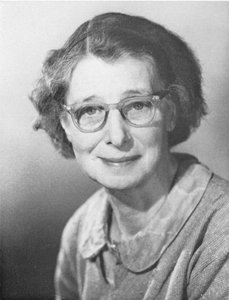Sidnie Manton facts for kids
Quick facts for kids
Sidnie Manton
|
|
|---|---|
 |
|
| Born | 4 May 1902 Kensington, London, England
|
| Died | 2 January 1979 (aged 76) |
| Education | St Paul's Girls' School |
| Alma mater | Girton College, Cambridge (Sc.D., 1934) |
| Known for | Contributions to zoology, marine biology |
| Spouse(s) | John Philip Harding (m. 1937) |
| Awards | Montifiore Prize (1925) Linnean Gold Medal (1963) Frink Medal (1977) |
| Scientific career | |
| Fields | Entomology, zoology |
| Institutions | Girton College, Cambridge |
Sidnie Milana Manton (May 4, 1902 – January 2, 1979) was an important British zoologist. A zoologist is a scientist who studies animals. She was known for her work in morphology, which is the study of the shape and structure of living things. Many people consider her one of the best zoologists of the 20th century.
Contents
Early Life and Education
Sidnie Milana Manton was born in Kensington, London. Her father was a dentist. She went to the Froebel Demonstration School and later to St. Paul's Girls' School. In 1921, she started studying at Girton College, Cambridge.
In 1925, Sidnie won the Montifiore Prize. She was at the very top of her class. However, she did not get the usual award that came with being first. This was because, at that time, women were not officially full members of Cambridge University. This meant they could study and learn, but they did not get the same recognition as men.
A Career in Science
Sidnie Manton started her career as a research student at Girton College, Cambridge. She later became the first woman to earn a Doctor of Science (ScD) degree from Cambridge University. She was also the first woman to work as a Demonstrator in Comparative Anatomy there. This meant she taught students about how different animals are built.
Exploring the Great Barrier Reef
From 1928 to 1929, Sidnie Manton joined an important trip to the Great Barrier Reef. This was the first time scientists had ever studied a coral reef in such a detailed way. Sidnie's job was to collect and keep animal samples, especially arthropods. Arthropods are a group of animals with exoskeletons, like insects, spiders, and crabs.
The scientists on this trip, including Sidnie, gathered a huge amount of information. They learned about how the reef's plants and animals lived together. They also studied the health of the reef. The information they collected is still useful to scientists today.
Studying Arthropods
As her career at Cambridge University grew, Sidnie Manton took on more roles. She became a Director of Studies in Natural Sciences and Geography. She also became a lecturer, teaching students about science.
Sidnie spent a lot of time studying how arthropods evolved. She looked at their habits and how their bodies worked. In 1977, she published a very important book called "The Arthropoda: Habits, Functional Morphology and Evolution". This book shared all her discoveries about these amazing creatures.
Sidnie Manton passed away on January 2, 1979. Her scientific papers and notes are kept at the Natural History Museum, London.
Awards and Recognition
Sidnie Manton received many important awards for her scientific work. These awards showed how much her work was valued.
- In March 1948, she became a Fellow of the Royal Society. This is a very high honor for scientists in the UK, and she was one of the first women to receive it.
- She was also a Fellow of the Linnean Society, another important scientific group. In 1963, they gave her a Gold Medal.
- In 1968, she received an honorary doctorate from the University of Lund in Sweden.
- The Zoological Society of London gave her the Frink Medal in 1977. They gave her this award for her great progress in helping us understand how arthropods evolved.
Sidnie Manton's work continued to be recognized even after her death. In 1992, a crater on the planet Venus was named "Manton" after her and her sister, Irene Manton. In 2018, a new award for young scientists, called the Sidnie Manton Award, was created by the British Ecological Society.
Personal Life
Sidnie Manton had a sister named Irene Manton, who was also a famous scientist who studied plants. In 1937, Sidnie married John Philip Harding. They had a son and a daughter.

